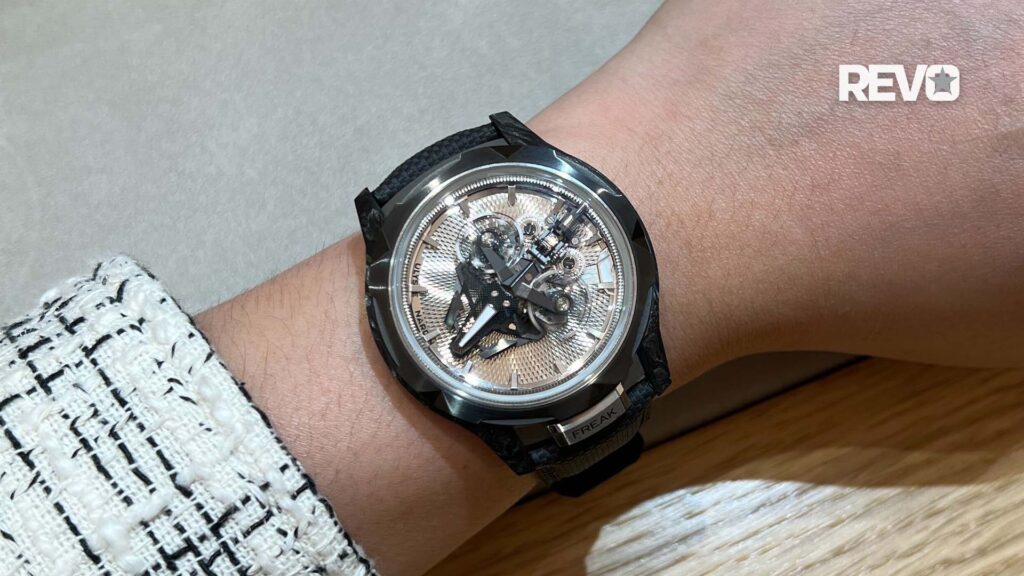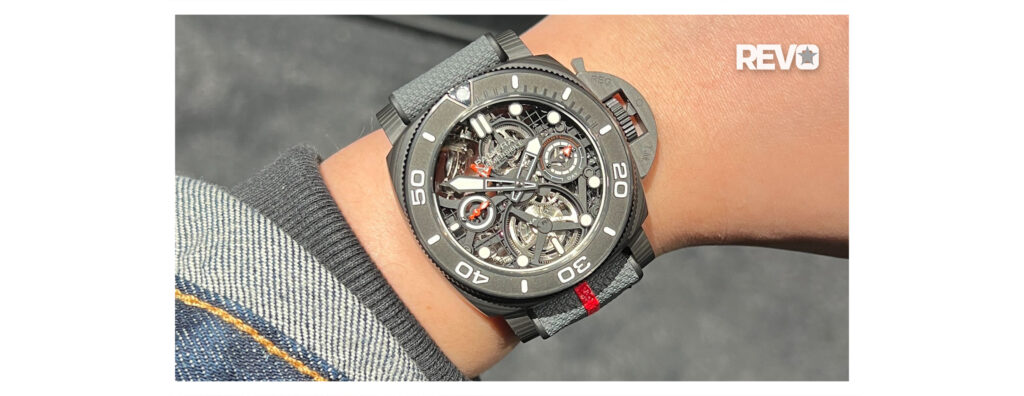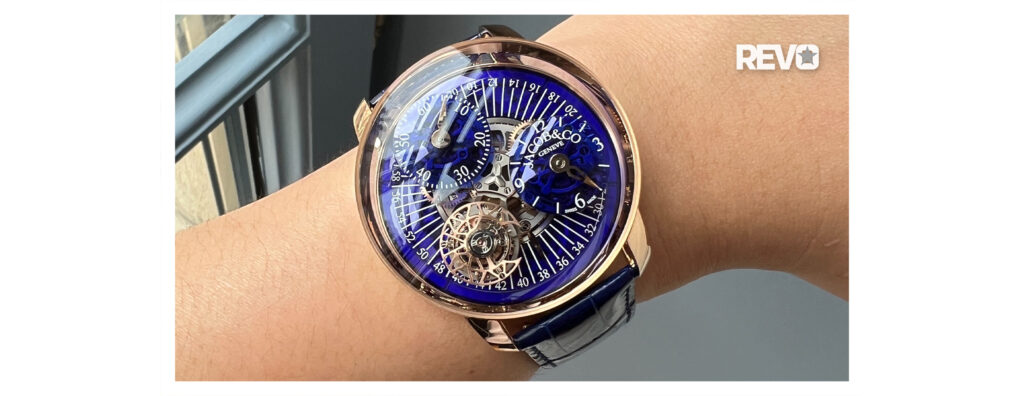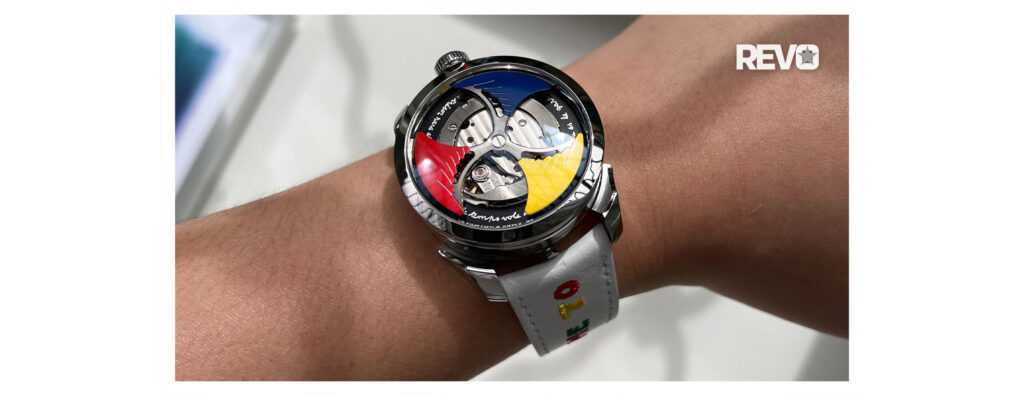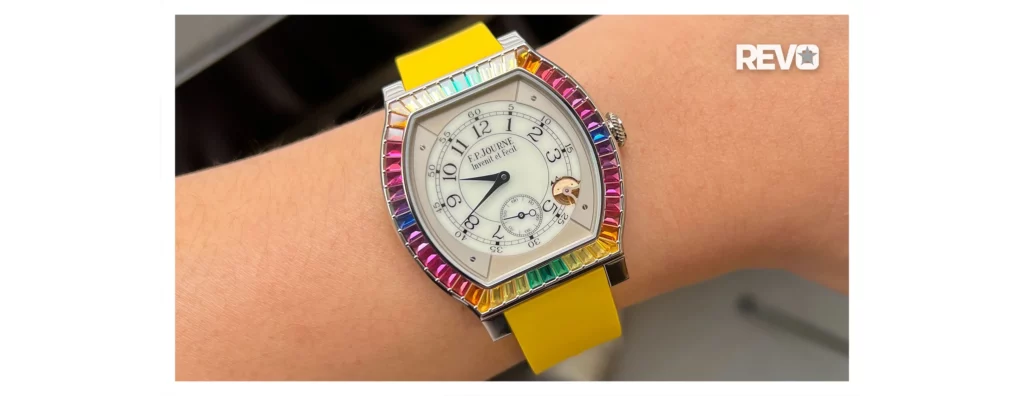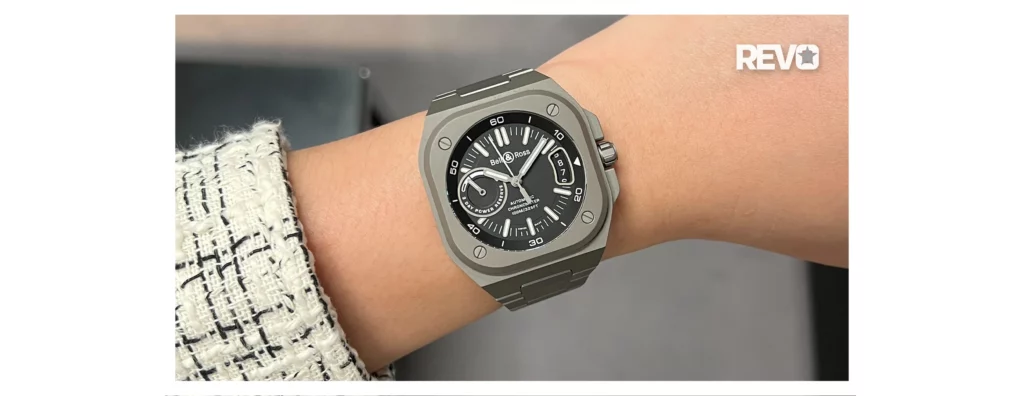Cartier
Weekend Warriors
And the watch world is no different. Alongside the direct reissues of military watches from a brand’s back catalog –look at the Longines Weems Second-Setting Watch or 2016’s sold-out Zenith Heritage Cronometro Tipo CP-2–it’s a sure bet that come every SIHH and Baselworld fair, the good, the bad and the ugly of contemporary horology will present countless newly conceived timepieces inspired by the armed forces.
Cockpit Creations
Bell & Ross is one of the keenest watch manufacturers to produce pieces of this kind. Founded in 1992, the Franco-Swiss company excels at producing watches with military design nuances. Its Aviation collection is inspired by the aeronautical instrumentation found in fighter jets, whereas the Vintage collection is based on timekeepers from both the First and Second World Wars. “Military design is at the center of all the watches we make,” says Bruno Belamich, B&R’s co-founder and Creative Director. “As well as design inspiration, we share the military’s values for performance and excellence– with our fundamental principles being legibility, functionality, precision and water-resistance.”
The BR 03-92 Military Type is a prime example of Bell & Ross’s prevailing design ethos. Displaying hours, minutes, seconds and date, the watch has a square 42mm matte-black ceramic case and is powered by a self-winding ETA-based movement. Martial-design touches include the olive color of the dial and strap, the Velcro heavy-duty canvas strap itself and the red “MT” (for “Military Type”) symbol between 7 and 8 o’clock. The symbol is a direct reference to the “3H” military mark found on the dials of certain watches issued to the German armed forces, the so-called “Bundeswehr”, from the likes of Heuer, Blancpain and Sinn. “3H” represents the chemical formula for tritium and indicated the use of the radioactive material for the dial’s luminescence.
Best Of The Best
Whereas Bell & Ross is a relative newcomer, IWC is a brand with historical military provenance–something that the company draws on with products like last year’s Big Pilot’s Heritage Watch 55 (a reissue of the Luftwaffe-issued B-Uhr) and Pilot’s Watch Mark XVIII (a reissue of the RAF-issued Mark 11). Alongside these reissued, vintage pilot’s watches, the Schaffhausen-based manufacture also offers a range of newly conceived watches produced with aerial combat in mind.
Partnering in name with the US Navy’s TOPGUN school–immortalized in the 1986 Tom Cruise film–IWC’s Top Gun range was launched in 2007 with the ref. IW3799-01 Pilot’s Double Chronograph and has since grown to include six different references. Now a popular and established part of the brand’s catalog, all are pilot’s watches designed with the name TOPGUN–or the United States Navy Strike Fighter Tactics Instructor program, to refer to it formally–at their core.
Christian Knoop, IWC’s Creative Director and the Top Gun collection’s lead designer, says: “The models combine the typical design signature of the Pilot’s range with military-inspired visual codes. With their black, cockpit-style design and the attractive mix of materials, such as high-tech ceramic and titanium alongside calfskin straps, they symbolize the coolness of the TOPGUN fighter pilots.”
Panerai, Breitling and Hamilton are, like IWC, brands with genuine military provenance that have capitalized and built on their heritage to produce new military-esque watches for the civilian market. Panerai released the Radiomir 1940 Minute Repeater Carillion Tourbillon GMT in May last year, a thoroughly non-combatant red-gold timepiece housed in the Radiomir case initially created under commission for Italy’s Navy: the Marina Militare. While at Baselworld last year, Hamilton presented a reimagined and updated version of their USN BUSHIPS canteen watch, the Khaki Navy Frogman. Clearly intended to be worn when sunning oneself on a sandy beach as opposed to attaching a limpet mine to a ship’s hull.
Join The Queue
The godfather of military inspired timepieces has got to be the Cartier Tank. Created in 1917, Louis Cartier looked to the First World War Renault FT tanks he had seen in action for the watch’s rectangular case and rounded lugs. Its formal release was in November 1919, with six examples retailed through Cartier’s Paris boutique. The prototype, however, was presented 18 months prior to the commander of the American Expeditionary Forces in Europe, General John J. “Black Jack” Pershing, as a gesture of national friendship.
Also drawing inspiration from First World War tanks, albeit on a slightly less discreet level, is the eccentric Neuchâtel-based brand Azimuth. The company has taken military–inspired design to an outlandish level with their SP-1 Landship–a watch that looks like the result of a weird breeding program between an Urwerk and an MB&F. The case shape echoes the body of a 1917 British Mark IV tank, its winding crown brings to mind a Mark IV’s gun sponson and its hour indicator is housed in a turret-like protrusion; even the black rubber strap suggests a caterpillar track.
Initially created for concealment on the battlefield, camouflage patterns have found their way onto the watchcases, dials, straps and even movements of numerous wristwatches. Hublot presented the Big Bang Unico Italia Independent in green, blue and black camo patterns at Baselworld 2016. A slew of Grahams feature the motif on their dials–along with Sinn, Ulysse Nardin, Ralph Lauren and Eberhard & Co. also choosing to include camo dials on the U1, Maxi Marine Diver, RL67 Safari and the Contograf Special Edition watches, respectively. Even Revolution’s own special-edition Blancpain Fifty Fathoms Bathyscaphe included camouflage decoration on the movement.
In Force
The watch world’s preoccupation with items designed for warfare even extends to watch straps. The now diminishing trend for NATO straps saw them attached to everything, including distinctly utilitarian Pateks and Langes. The likes of J. Crew and Suigeneric have retailed whimsically patterned versions featuring palm trees, polka dots and tartan. Hatton Garden jeweler Toby Mclellan even produces NATOs with pavé-set, gold hardware.
Popularly referred to as NATO straps, the original Ministry of Defense issued strap was in fact initially referred to by either its NATO Stocking Number (6645-99-527-7059 for the RAF and 6645-99-124-2986 for the Army and Navy) or, more commonly, in HM Forces’ jargon the G10 strap. Servicemen and women commonly refer to pieces of kit as “G10…” after the G1098 form they have to fill out in order to requisition said equipment from the quartermaster.
Be it a strap, a dial or even the watch as a whole, the DNA–as the Swiss watch industry loves to call it–of military design has clearly permeated the mindset of today’s horologists. And judging from some of the pieces mentioned on these pages, that’s far from a bad thing.




